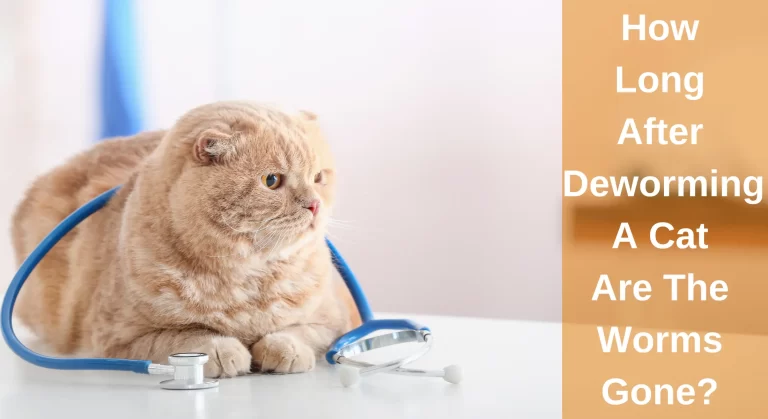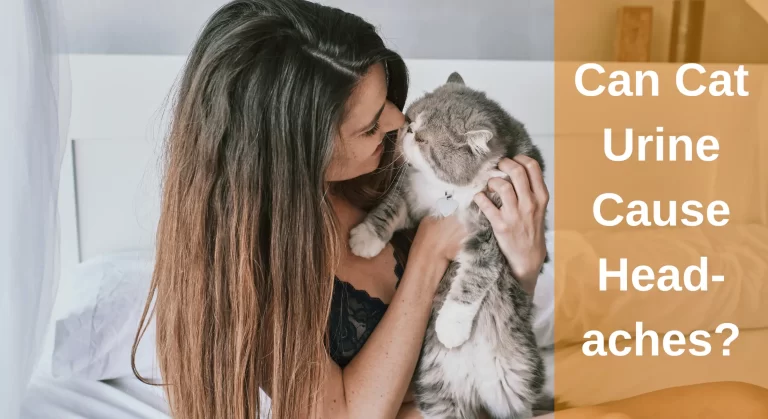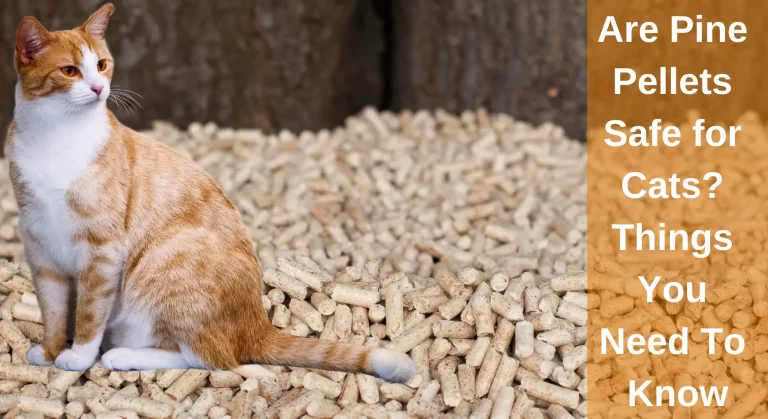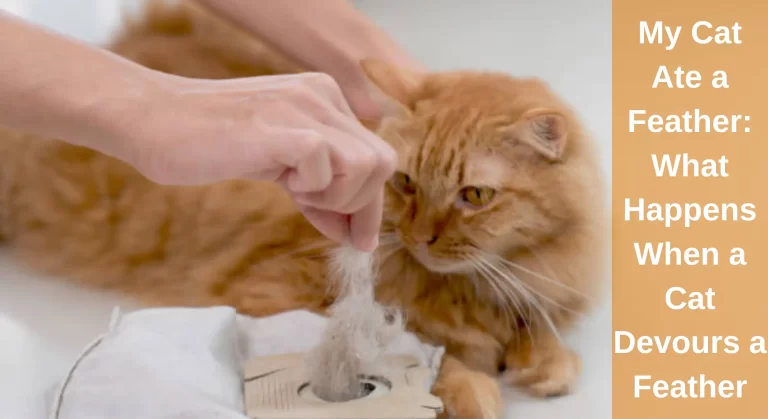How Many Times Can A Cat Get Pregnant In A Year? [Explained]
How many pregnancies can a cat have annually?
Maybe your cat just gave birth to kittens. Your household is bustling and fascinating right now. While caring for her young, the queen’s body is experiencing hormonal changes to prepare for her impending heat cycle.
So, how many times can a cat get pregnant in a year? Cats have the capacity for up to five pregnancies annually. A cat may have up to five litters a year since the gestation period after becoming pregnant lasts for around two months. The frequency of cat pregnancy and how to recognize a pregnant cat are both covered in this article.

How Many Pregnancies Can a Cat Have?
A cat can become pregnant after 8 weeks. Because you failed to neuter your female cat when you should have, she is now pregnant. You may select loving homes for the kittens and then spay her after the kittens are weaned, or you can take her to your veterinarian for the necessary care.
Despite the fact that it may sound harsh, abortion is a serious issue since so many cats are put to death in shelters each year. You could save lives by halting the birth of more kittens.
Find Out: Can A Cat Get Pregnant While Nursing?
What Would Happen if Your Cat Conceived Again Before Getting Spayed?

Since a mature cat’s gestation period is far shorter than that of a person, she is vulnerable to pregnancy throughout the whole year. Knowing the stages of a cat’s reproductive life will help you neuter her before she inadvertently becomes pregnant.
Cats go through puberty at a range of ages, much like people, and it is impacted by both hereditary and environmental factors. Your adorable little pet may start acting inappropriately as its hormones shift, just like when a person goes through adolescence.
She/ he may demand your attention if she is between 5-9 months.
Once your cat reaches maturity, pregnancy is always a possibility. Cats are prolific breeders like rabbits, and their heat cycles last between 14 and 21 days. This natural phenomenon highlights the need for pet owners to spay and neuter their animals since it may encourage the growth of feral cat colonies.
Now that she has more options for mating, she can produce a litter of kittens that at least contains two separate tomcats. Keep any prospective mating partners away from your cat indoors. Some veterinarians still elect to spay a cat or kitten while it is in heat, despite the procedure’s increased dangers.
Check Out: Do Human Pregnancy Tests Work on Cats?
How Frequently Can a Cat Reproduce Per Year?
In a year, cats can reproduce five or maybe six times. A mother cat may give birth to up to 5 litters of kittens annually. She might have one kitten at the low end and six kittens all at once at the high end of the spectrum. The size of the litter is also influenced by the mother cat’s age. Compared to queens, young, inexperienced mothers typically bear smaller litters.
Once a two- to three-week period of heat cycle begins, queen cats attain sexual maturity. On average, the heat cycle lasts up to 7 days. So, as soon as a cat is in heat, she can mate and get pregnant again.
Persian cats don’t fully mature until they’re almost a year old, whereas Siamese cats often go into heat at the age of four months as cats of various breeds mature at various times or at different rates.
If you are worried about your fluffy pet becoming pregnant, consider having her spayed. In veterinary hospitals, spaying and neutering are frequently carried out on 5-6 months old kittens.
The reproductive cycle doesn’t begin until the female cats are five months old, despite the fact that they can go into heat and get pregnant as early as four months old. This explains why the “kittens producing kittens” phenomenon causes shelters to fill to capacity in the spring and fall. Cats mature sexually and procreate more frequently in climates with lower temperatures. The increase in the number of kittens and their year-round presence in many shelters may be related to climate change.
Each heat phase lasts between five and twenty-one days. The cycle is repeated by the queen every 12 to 22 days if no mating occurs. Even though cats may not provide people with any bodily cues, their fragrance is vocally and plainly expressed to lovers.
Also Read: How To Tell If Cat Mating Was Successful?
Signs of Cat Pregnancy And How Long Does It Last?

On average, a cat’s pregnancy lasts 63 days. The mother cat’s physique gradually changes during the next 63 days as the fetuses develop and get bigger. In the first few weeks of pregnancy, owners may observe a pinking of the nipples, which also becomes more obvious. However, there hasn’t been any visible change lately.
She will then gradually put on weight after that, and as her due date draws near, her milk glands will start to fill. The female will begin looking for a suitable location to build a nest and hide her young as a result of hormonal changes.
Without the protection of a human family, she has very little chance of protecting her kittens. For the kittens to survive in the wild, the place has to be dry and well-hidden. The female may even choose many nests to have secure options in case her primary position is attacked.
The cat will decide where to give birth in a peaceful, safe, and often dark environment. Owners should offer the cat a cardboard box or a bed with linens if it turns out that this is where she chooses to give birth to her kittens.
What Occurs When a Cat Gives Birth Naturally?
Just before giving birth, the female cat may become restless, meow, pant, or purr. She will clean the area around the birth canal and the teats. It is thought that the mother leaves a trail of saliva after the kittens are born, which they may follow to a teat.
Her labour will go through numerous phases. Each kitten is born inside an amniotic sac, which the mother swallows and chews open to release it. She swallows the kitten’s placenta after biting the umbilical cord, then uses her scaly tongue to clean and force the kitten to breathe
Click For More: Can a Neutered Male Cat Still Get a Female Pregnant?
Why Should I Spay My Cat? What are the Benefits of Spaying My Cat?

You should neuter your cat for both her health and to help the battle against population expansion. Particularly before the first heat, spaying a female cat can help avoid uterine infections, breast cancer and uterine cancer as well. Neutered male cats are less prone to develop testicular cancer or problems with the prostate, as neutered animals often have longer, healthier lives.
In the long term, there may be significant financial consequences associated with either neutering or spaying your cat. Both the diagnosis and treatment of reproductive system cancers, as well as the cost of new cat litter, can be quite high.
By reducing the number of stray animals that end up in shelters rather than loving homes, spaying and neutering can aid in the effort to solve the pet overpopulation issue. Many cats find themselves abandoned and on their own.
Unaltered animals can be more destructive and may get into dangerous fights with stray animals nearby, necessitating expensive veterinarian care.
Also Read: Female Cat Behavior After Spaying: Expected Changes?
Frequently Asked Questions
Wrap Up!
Cats deliver babies quickly and inexplicably long. Therefore, in order to prevent overcrowding, maintain their health, and guarantee their long-term survival, it is your responsibility to have them spayed and neutered.
Who is Isabella?
My name is Isabella, and I am a dedicated and knowledgeable cat enthusiast. With years of experience caring for cats and a deep love for felines, I made a mission to help other cat lovers navigate the challenges of cat ownership.






